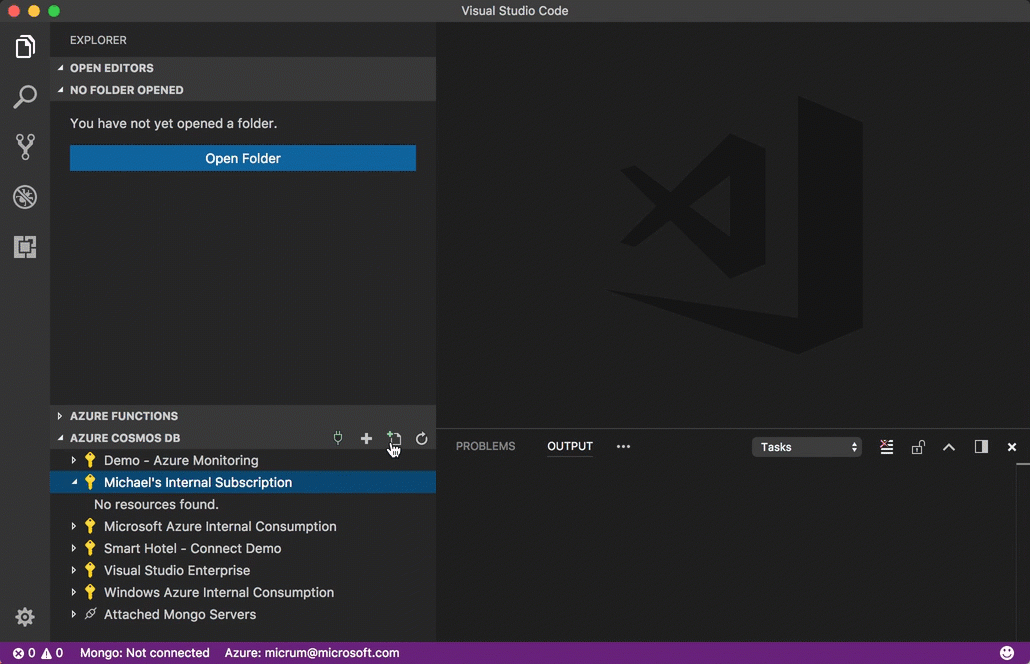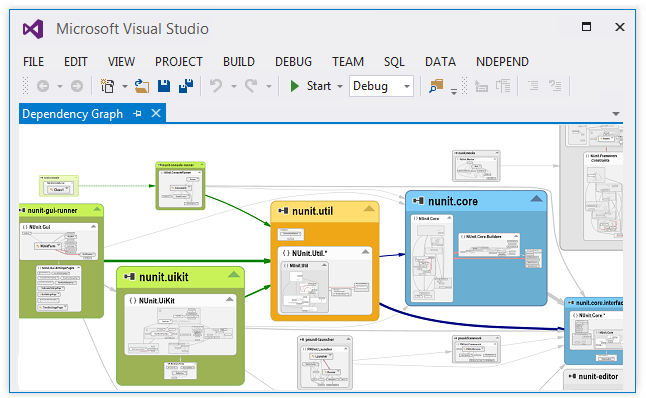CodeStream is a developer collaboration platform that integrates essential dev tools, such as GitHub Enterprise, Slack, Teams, Jira, Trello and more, into VS Code. Eliminate context-switching and simplify code discussion and code review by putting collaboration tools in your IDE.
Visual Studio Code is free and available on your favorite platform - Linux, macOS, and Windows. Download Visual Studio Code to experience a redefined code editor, optimized for building and debugging modern web and cloud applications.

Create, review and merge GitHub pull requests and GitLab merge requests inside VS Code, with full source-tree and full file access, your favorite keybindings, built-in diff tool, and code intelligence.
- Visual Studio is a fully-featured IDE whereas Visual Studio Code is a code editor. Visual Studio Code is free and based on open source, and runs on Windows, macOS, and Linux. Check out this doc for a more detailed understanding of the differences.
- GitHub Enterprise by CodeStream CodeStream is a developer collaboration platform that integrates essential dev tools, such as GitHub Enterprise, Slack, Teams, Jira, Trello and more, into VS Code. Eliminate context-switching and simplify code discussion.
CodeStream's lightweight feedback requests let you get feedback on your changes regardless of the current state of your repo, without the friction of committing, pushing or issuing a pull request. Your teammates can review your changes right in their IDE, with full file context, and with no need to set aside their current work to switch branches or pull the latest.
CodeStream’s feedback requests encourage developers to share progress throughout the development process rather than waiting until the end or a feature branch. Get feedback on your work-in-progress to align design with implementation and streamline final code review.
Rather than copying & pasting, CodeStream enables in-editor commenting on any code in your repository, with optional sharing to Slack, MS Teams or via email, with automatic at-mentioning of code authors via git blame.
Your teammates can participate in the discussion right from their IDE, or from Slack, Teams, or replying to the email.
CodeStream turns conversation into documentation by capturing all of the discussion about your code, and saving it with your code. Comment and code review threads are automatically repositioned as your code changes, even across branches. All with zero effort on your part.
Previously discussed questions and issues that explain important decisions are now accessible right where you need them, when you need them. Just click on the codemark to expand it and see how something works or why something was done a certain way.
What are the system requirements?
- CodeStream requires a current version of Visual Studio Code, and is also available for JetBrains, Visual Studio or Atom.
- Your repository must be managed by Git, or a Git hosting service like GitHub.


What integrations does CodeStream offer?
- Issue Trackers: Asana, Azure DevOps, Clubhouse, GitHub, GitHub Enterprise, Jira, Linear, Trello, YouTrack
- Messaging Services: Slack, Microsoft Teams
Does CodeStream have an on-prem solution?
Yes! If it's important for your company to keep everything on your own local network, read our CodeStream On-Prem documentation to learn more about the offering. You can be up and running in just minutes!
Where are messages stored?
Your team’s codemarks, which include the message text and the code snippet, are stored in the cloud on CodeStream’s servers. CodeStream uses best practices when it comes to security, but if your team has stringent infosec requirements an on-prem installation option is available.
Check out the user guide for more information on getting started with CodeStream. Please follow @teamcodestream for product updates and to share feedback and questions. You can also email us at support@codestream.com.

Make sure your app meets architectural requirements by using Visual Studio architecture and modeling tools to design and model your app.
Understand existing program code more easily by using Visual Studio to visualize the code's structure, behavior, and relationships.
Educate your team in the need for respecting architectural dependencies.
Create models at different levels of detail throughout the application lifecycle as part of your development process.
See Scenario: Change your design using visualization and modeling.
Article reference
| Scenario | Articles |
|---|---|
| Visualize code: - See the code's organization and relationships by creating code maps. Visualize dependencies between assemblies, namespaces, classes, methods, and so on. - See the class structure and members for a specific project by creating class diagrams from code. - Find conflicts between your code and its design by creating dependency diagrams to validate code. | - Visualize code - Working with Classes and Other Types (Class Designer) - Video: Understand design from code with Visual Studio 2015 code maps - Video: Validate your architecture dependencies in real time |
| Define the architecture: - Define and enforce constraints on dependencies between the components of your code by creating dependency diagrams. | - Video: Validate architecture dependencies with Visual Studio (Channel 9) |
| Validate your system with the requirements and intended design: - Validate code dependencies with dependency diagrams that describe the intended architecture and prevent changes that might conflict with the design. | - Video: Validate architecture dependencies with Visual Studio (Channel 9) |
| Customize models and diagrams: - Create your own domain-specific languages. | - Modeling SDK for Visual Studio - Domain-Specific Languages |
| Generate text using T4 templates: - Use text blocks and control logic inside templates to generate text-based files. - T4 template build with MSBuild included in Visual Studio | - Code Generation and T4 Text Templates |
| Share models, diagrams, and code maps using Team Foundation version control: - Put code maps, projects, and dependency diagrams under Team Foundation version control so you can share them. |
To see which editions of Visual Studio support each feature, see Edition support for architecture and modeling tools
Visual Studio Code Enterprise Download
Types of models and typical uses
Code maps
Code maps help you see the organization and relationships in your code.

Visual Studio Enterprise Code Coverage
Typical uses:
- Examine program code so you can better understand its structure and its dependencies, how to update it, and estimate the cost of proposed changes.
See:
Dependency diagrams
Dependency diagrams let you define the structure of an application as a set of layers or blocks with explicit dependencies. Live validation shows conflicts between dependencies in the code and dependencies described on a dependency diagram.
Typical uses:
- Stabilize the structure of the application through numerous changes over its life.
- Discover unintentional dependency conflicts before checking in changes to the code.
See:
Domain-specific language (DSL)
A DSL is a notation that you design for a specific purpose. In Visual Studio, it's usually graphical.
Typical uses:
- Generate or configure parts of the application. Work is required to develop the notation and tools. The result can be a better fit to your domain than a UML customization.
- For large projects or in product lines where the investment in developing the DSL and its tools is returned by its use in more than one project.
See:
Microsoft Visual Studio Enterprise
See also

Comments are closed.